Published by Diver, April 2018, with the headline “Child’s play in Gozo”.
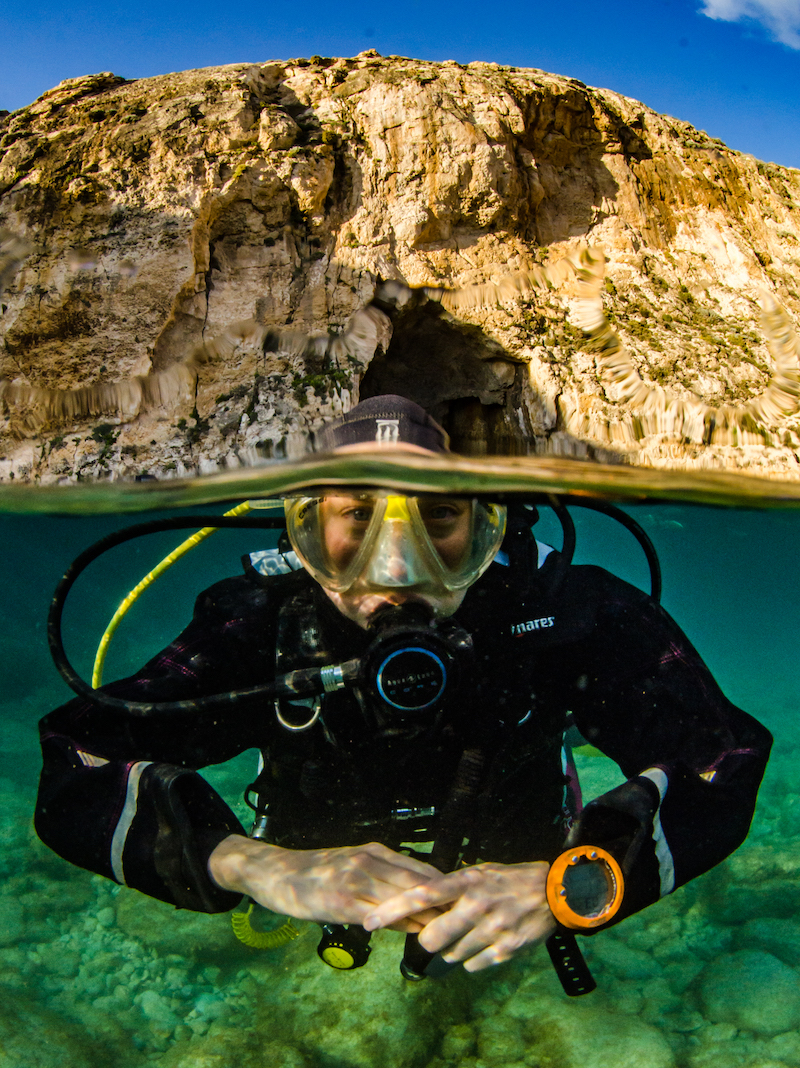
Our daughter has spotted us coming out of the water, and I can see her reaching for me as we walk back to the truck. I rush to put down my tank and peel off my dry suit as she squirms in my babysitting brother’s arms – she’s suddenly desperate to be reunited after my short sojourn beneath the waves.
My partner and I get changed and pack our gear into the truck, passing the baby girl between us and back to my brother when faced with tasks requiring two hands. We strap her into her car seat, and she’s asleep before we reach the main road.
On days like this, diving with a baby in tow feels like a breeze.
It’s all pretty new for us. This trip to Gozo is only the second time we’ve been diving since our daughter was born 14 months ago, a follow-up to a week at Somabay in Egypt when she was seven-months-old.
For that first dive holiday we travelled with some friends with a baby, and tag-teamed babysitting and diving so we were able to buddy each other some of the time.
Here in Gozo we’re trying another childcare option. My 19-year-old brother Yoji is babysitting in exchange for us covering his accommodation and transfers. My partner and I had assumed that we would leave Yoji and the baby behind in Marsalforn while we dived, but dive guides Denis Marin and Georgia Mainente – in charge of Atlantis Diving Centre while owners Brian and Stephania Azzopardi are out of town – were quick to suggest that they come with us in the dive truck instead.
I shouldn’t have been surprised really – the team had already organised us an apartment with a cot and high chair, and the dive centre is equipped with a big pile of toys belonging to the Azzopardis’ daughter.
Somehow we’ve stumbled upon the most family-friendly dive centre in the world.
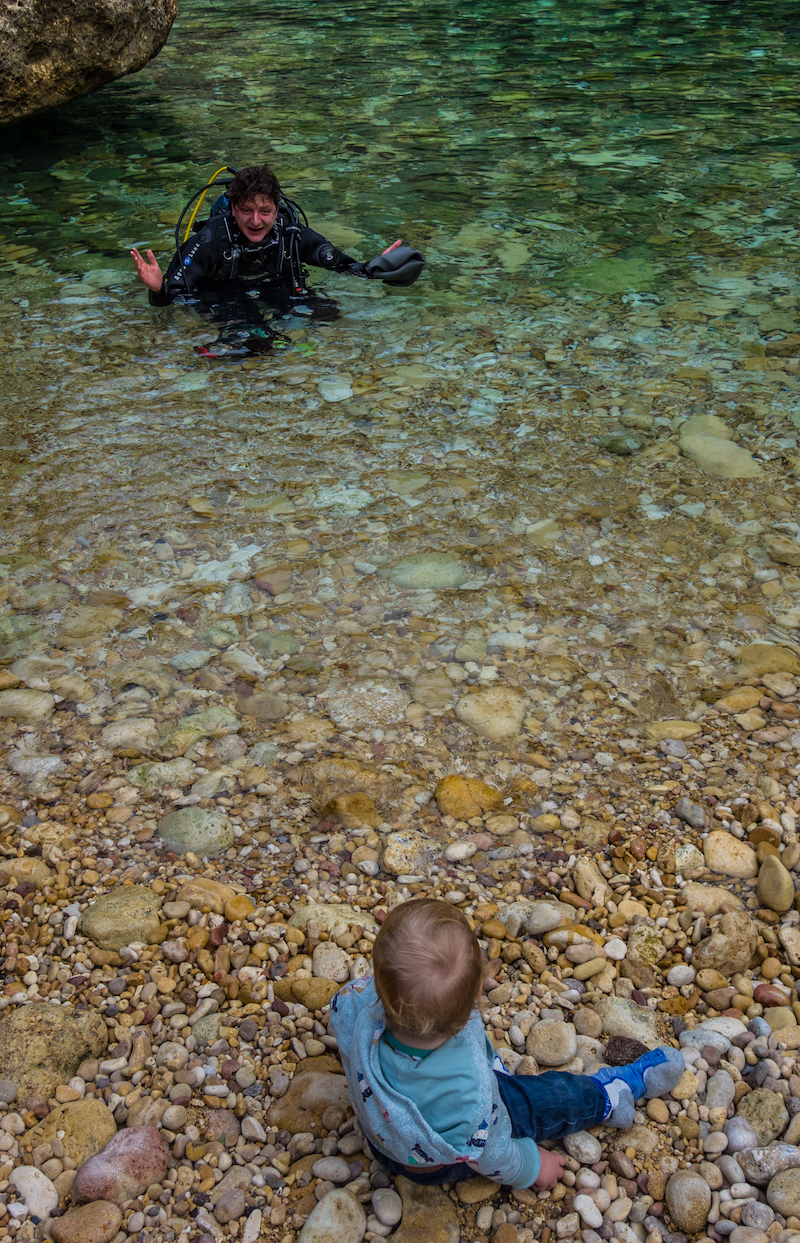
We picked Gozo partly because it’s one of the warmest winter dive destinations in Europe, but also because I’ve been itching to come back here since learning to dive in Xlendi Bay just over 10 years ago.
I never made it to the island’s star underwater attractions on that trip – awesome geological features like the Blue Hole, Inland Sea and Cathedral Cave – and it’s high time to tick them off the list.
Coming here in November, and for just a week, is something of a risky move, but it’s the only time we have, so we’re keeping our fingers crossed for good weather.
We get lucky – after two weeks of strong wind, the dive sites on the north and west of the island are open for business again just in time for our arrival.
We start in Dwejra, at the Inland Sea, gearing up on the stony beach alongside tourists waiting for a fishing boat to take them out through the 80m channel through the cliff. It’s an easy entry off the jetty and, after a short swim on the surface to the opening of the tunnel, we make our descent over shallow boulders home to bearded fireworms and green spoon worms.
It’s dim and narrow here but as we step down a series of shelves to 24m, the channel widens and is flooded with beautiful blue light. Apparently infinite visibility makes this a treat of a first dive.
We turn left out of the channel and follow the algae-covered wall until we reach a narrow cave that cuts deep into the cliff, only accessible when the conditions are right. Pulled gently to and fro by the swell as I make my way in, I can see why you wouldn’t want to try this in rougher weather.
There’s a big shoal of damselfish mobbing the entrance to the channel and a few juvenile parrotfish and scorpion fish here and there but in terms of flora and fauna, this site (and Gozo in general, I’ll learn over the next few days) is really one for algae and sponge enthusiasts.
A carpet of bright green, red and purple covers the walls, providing ample grazing for the handful of nudibranchs dotted around the place.
We’re back at Dwejra bright and early the next morning to dive the Blue Hole before anyone else gets there. There are hardly any other divers around anyway – most of the dive-centres in Gozo are closed for the winter, in fact – but Denis is taking no chances.
His caution pays off – we have the place to ourselves and the entry is an astonishing experience as a result, the surface of the water perfectly still, giving way to the brightness of an archway on one side and the darkness of a cave on the other.
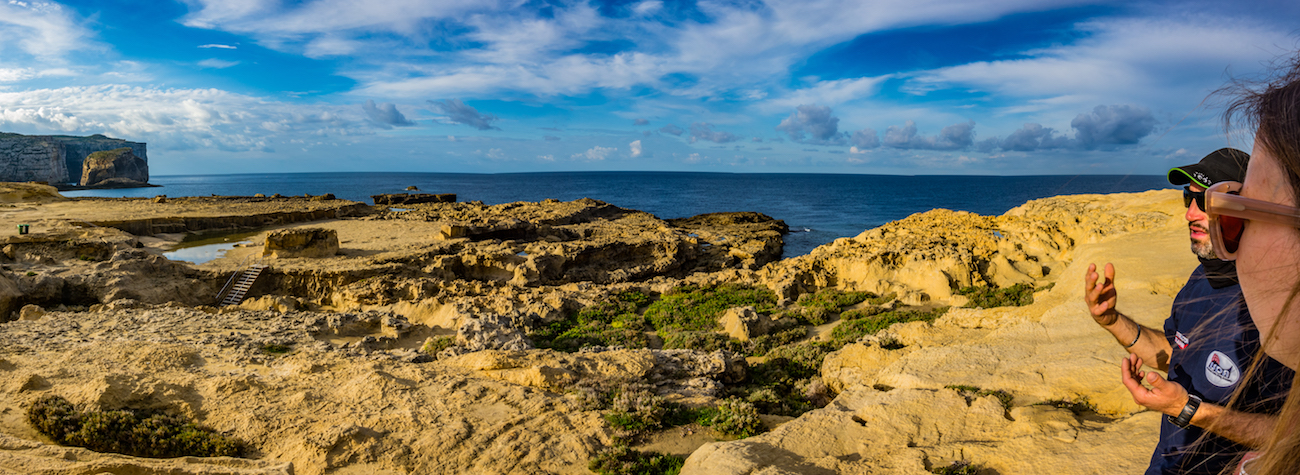
We explore the cave (which, at just 14m down and with a wide opening, is accessible to all), finding conger eels and shrimp hiding in gaping horizontal cracks in the rock, before heading out through the archway.
Turn right, as we do now, and you find the ruins of the Azure Window, once Gozo’s most famous photo opportunity, but since March 2017 just a pile of massive boulders on the seabed.
The collapse of the arch in a heavy spring storm was a real blow for the island, but fortunately sightseeing’s loss was diving’s gain – this is now a truly brilliant dive site.
There’s not much life here yet – just a faint fuzz of green algae on the sun-bleached rocks – but that doesn’t matter because the area is a veritable maze of swim-throughs, offering endless routes to explore.
Heading back past the Blue Hole, we head up the Chimney, going nearly straight up from 20 to 12m, then up again to 7m to find ourselves in the Coral Gardens. It’s great fun, and beautiful too, the walls of the passageway lined with yellow anemones that give way to yellow-green algae up top that glows bright in the sunshine. Coral Gardens, we discover, is sheltered and shallow, perfect for beginners.
We finish our dive in the Blue Hole – all by ourselves once again. During the safety stop, I watch tourists peering in from the rocks above and a few tiny fish skittering around just beneath the surface. If I had to choose one way of finishing every dive from now on, this would be it.
The walk back to the car park, around slippery rock pools and along a path carved into thefossil-packed coralline limestone, is arduous but nothing compared to the route we take to Crocodile Rock – another of Dwejra’s dive site – the following morning.
Snug in my dry suit and undersuit, I’m seriously warm by the time we’ve made our way gingerly across the moon-like expanse of spiky limestone pools, and it’s a relief when I can finally step into the 20° water. I can’t imagine what this walk must be like at the height of summer.
We swim on the surface towards the massive outcrop of Crocodile Rock for a few minutes before descending to discover that there’s much more of the rock underneath the water than there is up top.
Keeping it on our left, we gradually make our way down to 39m, to find boulders littering the sea floor but no sign of the large groupers we’re told sometimes hang out here.
Up above us, all of a sudden, are hundreds of barracuda shoaling in an enormous underwater valley between two steep peaks. They pour over the sheer edge of the rock towards us, circling our group before disappearing into shallower water. It’s a mesmerising sight.
After a couple of days playing with the baby on the beach of the Inland Sea, my brother is keen to see some other areas of the island. So after one more dive at the Blue Hole, Denis takes us to the Salt Pans, location of a handful of dive sites to suit various tastes and levels of experience.
To reach Dwejra from Marsalforn you have to drive into Victoria, the main town at the centre of Gozo, and out again, a journey of around 25 minutes, but the Salt Pans are just a short hop along the coast.
Gozitans have been harvesting salt from shallow pools on this beautiful patch of shore since Roman times. In the summer you have to be careful not to step in the pans on your way to the water, but it’s not an issue in the winter, so we stomp straight through.

Our first stop is Reqqa Point, right at the far end of the pans, necessitating a slow, bumpy, off-road drive that I feel sure is going to end in disaster, but somehow doesn’t.
Steve is looking after the baby girl this afternoon so I’m buddying Denis, while Yoji takes the opportunity to do some snorkelling along the rocks above us.
Denis and I turn right after a giant stride in, descend 10m and duck down, feet first, into a chimney I would never have spotted on my own.
Popping out at the bottom, we double back to Reqqa Point and follow a sheer algae-covered wall west.
Denis points out the entrance to Bubble Cave, a favourite with technical divers, at 36m, before leading me to the top of a sea grass-covered plateau, from which we “jump” off into the blue.
There’s quite a swell at the end of the dive and the rocks below the exit ladder are slippery with algae so Denis signals for me to put my fins around my wrists and get ready. An unceremonious shove from below and I’m sliding up the rocks and grasping the ladder with both hands – not exactly a graceful way out of the water, but a whole lot of fun.
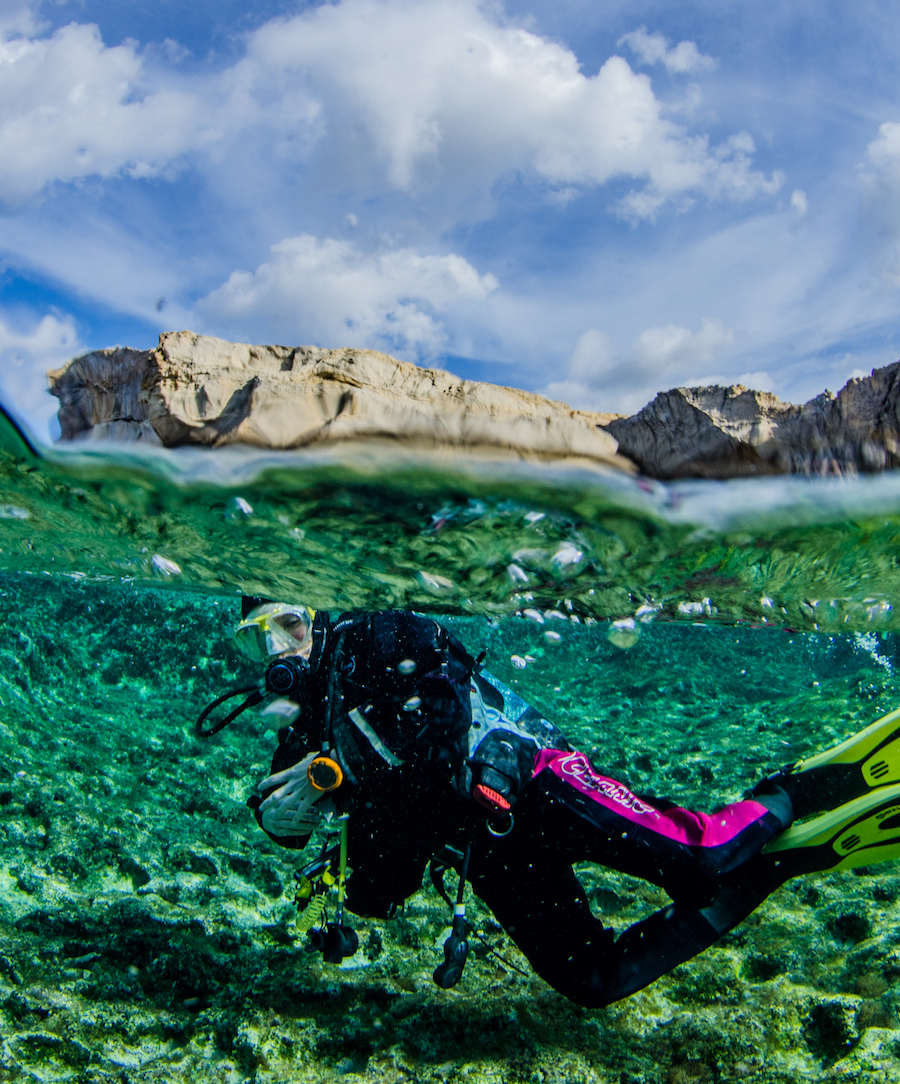
The next day we all return to the Salt Pans, Yoji and the baby playing in the rock pools in the sunshine while Steve and I dive Double Arch with Denis.
The arch itself is stunning – appearing out of the blue to one side of a large natural amphitheatre – but doesn’t warrant the tedious 10-minute swim on the surface to get there from the shore.
If you’re going to make an effort to get to a dive site in this part of Gozo, save your energy for Cathedral Cave. There’s supposed to be a ladder at the far end of the Salt Pans that puts you in just the right spot for the cave, but it’s been washed away by the time of our visit and won’t be replaced until the spring.
Which means that the only way to get there is down 100 steps cut into Wied il-Ghasri gorge, followed by another 10-minute surface swim – this time in rather more picturesque surroundings.
Under water it’s the usual mix of juvenile scorpionfish, nudis and algae, until all of a sudden I get lucky and spot a little octopus hiding in a hole in a wall. From then on it’s marine life a-go-go, Dennis pointing out a slipper lobster and a Swiss cow nudibranch, while a cuttlefish lurks in a crack at the opening of the cave.
Cathedral Cave is enormous, both above and below the water, entirely justifying its name. A small window lets in fresh air and enough light that we don’t need our torches to see by, and when we duck back under the water to make our way back out, the mouth of the cave is bathed in blue.
On the swim back to the gorge, the waves are smashing powerfully against the rocks above us, a sign of the arrival of a weather front that means that this will be our last visit to Gozo’s famed north and west coast dive sites this week.
The climb back up the gorge is exhausting but I’d do it all again in a shot for another glimpse of Cathedral Cave.
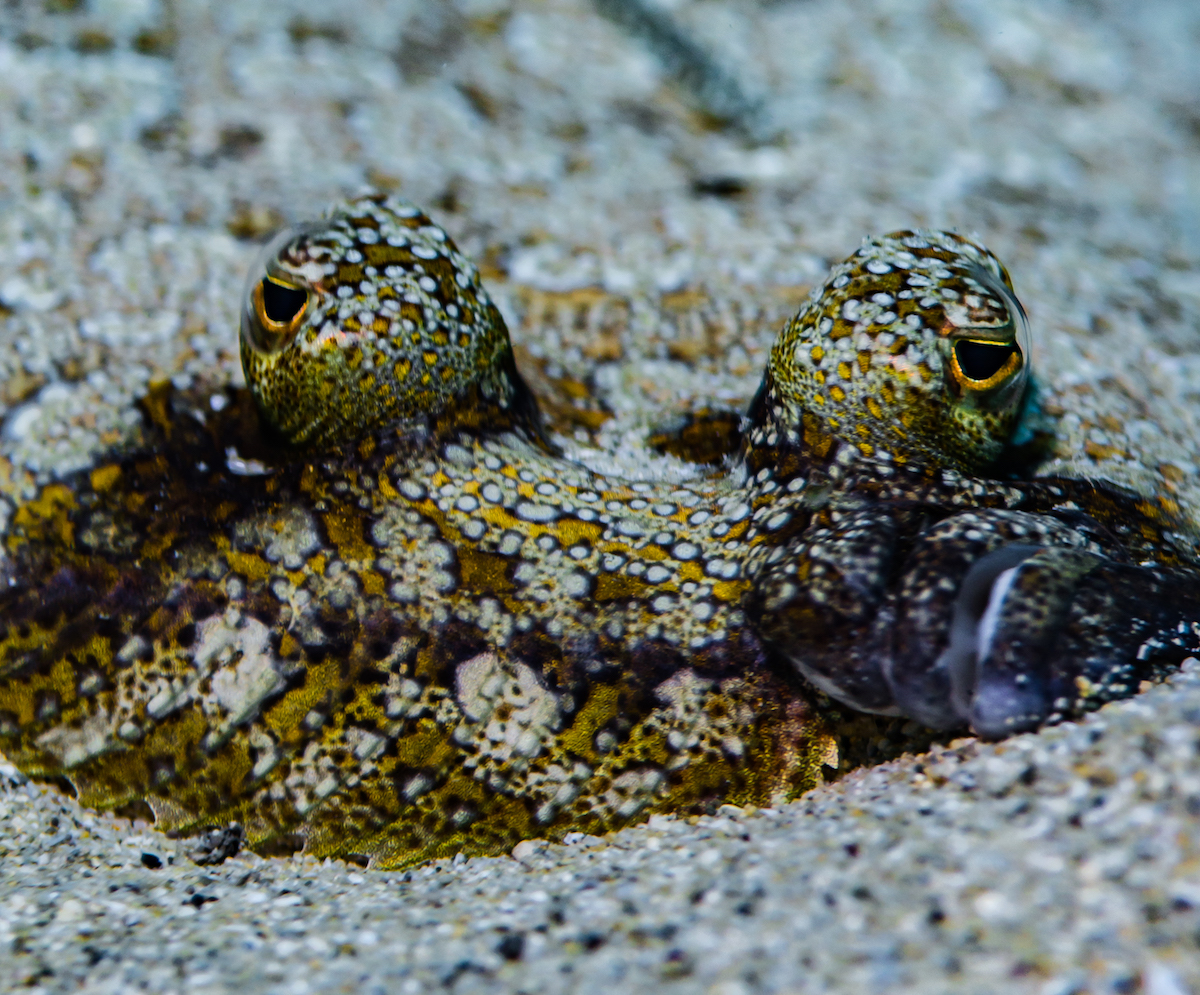
We head to the south of the island for our final dives, trying out the sheltered bay of Mgarr ix-Xini and the scuttled passenger ferry Karwela. The wreck-dive is nothing special – with its deck at 33m down, there’s not enough time to explore properly on a no-deco dive.
Added to that, Karvela is dived so frequently that there’s barely any life there, even after 12 years submerged.
The opposite is true of the marine meadow area we pass over on our way back to shore, where I spot no fewer than four octopuses, plus my first ever long-snouted sea horse.
Mgarr ix-Xini, meanwhile, hosts a riot of cuttlefish and flounders, an opportunity for Steve to get his macro lens out after days taking spectacular wide angle shots, and a suitably rewarding spot for my brother to give diving a go for the first time.
Needless to say, he’s hooked, and keen to come along on another diving/babysitting trip the next time we need him.
It’s all been a resounding success. My partner and I have both dived a little less than we would have if we’d been travelling without our daughter – nine dives each over the course of the week, rather than the 12 you might hope to pack in – but that’s OK.
Taking things a little slower has given us the chance to relax in a way that we don’t normally get to do on a dive trip. We’ve even got to see something of Gozo’s topside attractions, checking out the ancient temples at Ġgantija, the impressive Citadel that overlooks Victoria, and pretty Xlendi Bay.
We’ll be booking our next dive trip with the baby as soon as we can work out where to go. And who we can persuade to babysit for us of course.
FACTFILE
GETTING THERE: Direct flights to Malta from multiple UK airports with airlines including BA, Jet2.com and easyJet. Taxi or bus to the ferry terminal at Cirkewwa, then ferry to Mgarr in Gozo.
DIVING: Multiple dive centres operate in the two resort towns of Marsalforn and Xlendi – Jo highly recommends Atlantis Diving Centre in Marsalforn, atlantisgozo.com
ACCOMMODATION: Basic apartments near Atlantis and five-minutes’ walk from the centre of Marsalforn are cheap. Atlantis has a lodge and can arrange villa accommodation.
WHEN TO GO: Diving is possible year-round, though strong winds can be a problem between November and February, and it can get very hot in midsummer.
MONEY: Euro.
PRICES: Return flights from £130 (May), Atlantis Lodge costs 60-80 euros per room per night (two sharing), a 10-dive package with Atlantis costs 220 euros pp.
VISITOR INFORMATION: visitmalta.com
